Reciprocal negative regulation of PDK1 and ASK1 signaling by direct interaction and phosphorylation
- PMID: 19920149
- PMCID: PMC2807298
- DOI: 10.1074/jbc.M109.064295
Reciprocal negative regulation of PDK1 and ASK1 signaling by direct interaction and phosphorylation
Abstract
Cell survival and death-inducing signals are tightly associated with each other, and the decision as to whether a cell survives or dies is determined by controlling the relationship between these signals. However, the mechanism underlying the reciprocal regulation of such signals remains unclear. In this study, we reveal a functional association between PDK1 (3-phosphoinositide-dependent protein kinase 1), a critical mediator of cell survival, and ASK1 (apoptosis signal-regulating kinase 1), an apoptotic stress-activated MAPKKK. The physical association between PDK1 and ASK1 is mediated through the pleckstrin homology domain of PDK1 and the C-terminal regulatory domain of ASK1 and is decreased by ASK1-activating stimuli, such as H(2)O(2), tumor necrosis factor alpha, thapsigargin, and ionomycin, as well as insulin, a PDK1 stimulator. Wild-type PDK1, but not kinase-dead PDK1, negatively regulates ASK1 activity by phosphorylating Ser(967), a binding site for 14-3-3 protein, on ASK1. PDK1 functionally suppresses ASK1-mediated AP-1 transactivation and H(2)O(2)-mediated apoptosis in a kinase-dependent manner. On the other hand, ASK1 has been shown to inhibit PDK1 functions, including PDK1-mediated regulation of apoptosis and cell growth, by phosphorylating PDK1 at Ser(394) and Ser(398), indicating that these putative phosphorylation sites are involved in the negative regulation of PDK1 activity. These results provide evidence that PDK1 and ASK1 directly interact and phosphorylate each other and act as negative regulators of their respective kinases in resting cells.
Figures

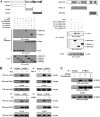
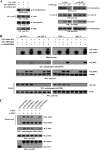
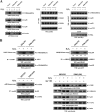

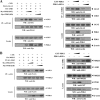

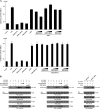

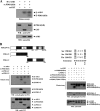

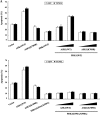


Similar articles
-
PDK1 protein phosphorylation at Thr354 by murine protein serine-threonine kinase 38 contributes to negative regulation of PDK1 protein activity.J Biol Chem. 2012 Jun 15;287(25):20811-22. doi: 10.1074/jbc.M111.331827. Epub 2012 Apr 27. J Biol Chem. 2012. PMID: 22544756 Free PMC article.
-
Serine-threonine kinase receptor-associated protein inhibits apoptosis signal-regulating kinase 1 function through direct interaction.J Biol Chem. 2010 Jan 1;285(1):54-70. doi: 10.1074/jbc.M109.045229. Epub 2009 Oct 30. J Biol Chem. 2010. PMID: 19880523 Free PMC article.
-
A crucial role for the phosphorylation of STRAP at Ser(188) by MPK38 in STRAP-dependent cell death through ASK1, TGF-β, p53, and PI3K/PDK1 signaling pathways.Cell Cycle. 2014;13(21):3357-74. doi: 10.4161/15384101.2014.952165. Cell Cycle. 2014. PMID: 25485581 Free PMC article.
-
The ASK1-MAP kinase cascades in mammalian stress response.J Biochem. 2004 Sep;136(3):261-5. doi: 10.1093/jb/mvh134. J Biochem. 2004. PMID: 15598880 Review.
-
Structural aspects of protein kinase ASK1 regulation.Adv Biol Regul. 2017 Dec;66:31-36. doi: 10.1016/j.jbior.2017.10.002. Epub 2017 Oct 16. Adv Biol Regul. 2017. PMID: 29066278 Review.
Cited by
-
Large tumor suppressor 2, LATS2, activates JNK in a kinase-independent mechanism through ASK1.J Mol Cell Biol. 2018 Dec 1;10(6):549-558. doi: 10.1093/jmcb/mjy061. J Mol Cell Biol. 2018. PMID: 30496488 Free PMC article.
-
PKCθ-Mediated PDK1 Phosphorylation Enhances T Cell Activation by Increasing PDK1 Stability.Mol Cells. 2017 Jan;40(1):37-44. doi: 10.14348/molcells.2017.2236. Epub 2017 Jan 26. Mol Cells. 2017. PMID: 28152304 Free PMC article.
-
Dynamic Phosphorylation of Apoptosis Signal Regulating Kinase 1 (ASK1) in Response to Oxidative and Electrophilic Stress.Chem Res Toxicol. 2016 Dec 19;29(12):2175-2183. doi: 10.1021/acs.chemrestox.6b00339. Epub 2016 Nov 30. Chem Res Toxicol. 2016. PMID: 27989136 Free PMC article.
-
Crystallographic mining of ASK1 regulators to unravel the intricate PPI interfaces for the discovery of small molecule.Comput Struct Biotechnol J. 2022 Jul 11;20:3734-3754. doi: 10.1016/j.csbj.2022.07.008. eCollection 2022. Comput Struct Biotechnol J. 2022. PMID: 35891784 Free PMC article. Review.
-
Hepatic gluconeogenesis is enhanced by phosphatidic acid which remains uninhibited by insulin in lipodystrophic Agpat2-/- mice.J Biol Chem. 2014 Feb 21;289(8):4762-77. doi: 10.1074/jbc.M113.530998. Epub 2014 Jan 14. J Biol Chem. 2014. PMID: 24425876 Free PMC article.
References
-
- Brunet A., Bonni A., Zigmond M. J., Lin M. Z., Juo P., Hu L. S., Anderson M. J., Arden K. C., Blenis J., Greenberg M. E. (1999) Cell 96, 857–868 - PubMed
-
- Cardone M. H., Roy N., Stennicke H. R., Salvesen G. S., Franke T. F., Stanbridge E., Frisch S., Reed J. C. (1998) Science 282, 1318–1321 - PubMed
-
- Cross D. A., Alessi D. R., Cohen P., Andjelkovich M., Hemmings B. A. (1995) Nature 378, 785–789 - PubMed
-
- Datta S. R., Dudek H., Tao X., Masters S., Fu H., Gotoh Y., Greenberg M. E. (1997) Cell 91, 231–241 - PubMed
Publication types
MeSH terms
Substances
LinkOut - more resources
Full Text Sources
Molecular Biology Databases
Research Materials
Miscellaneous

